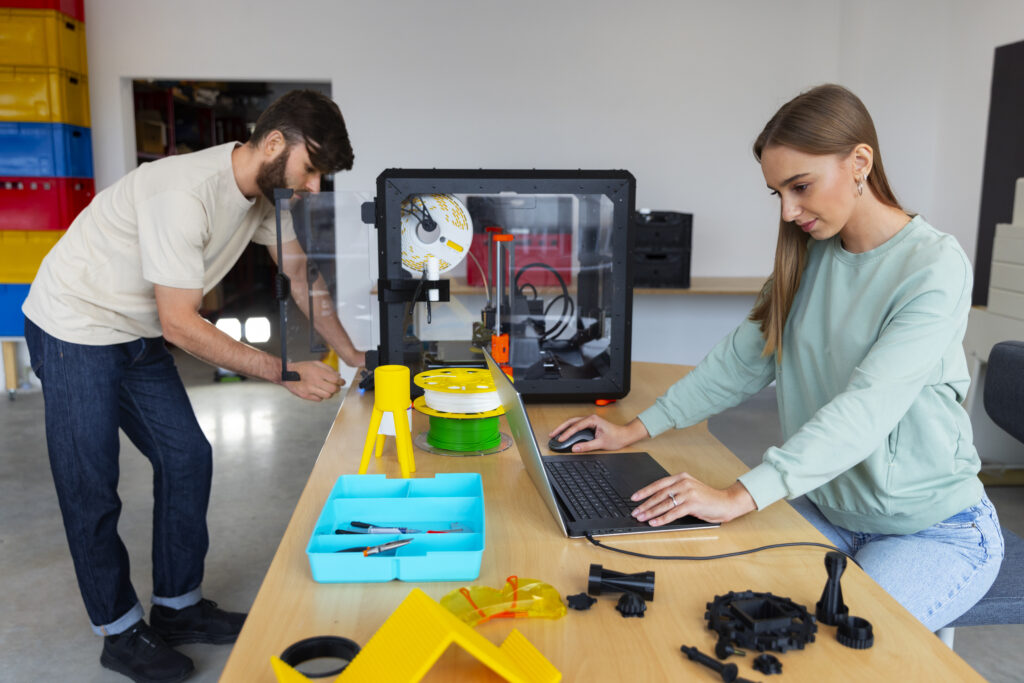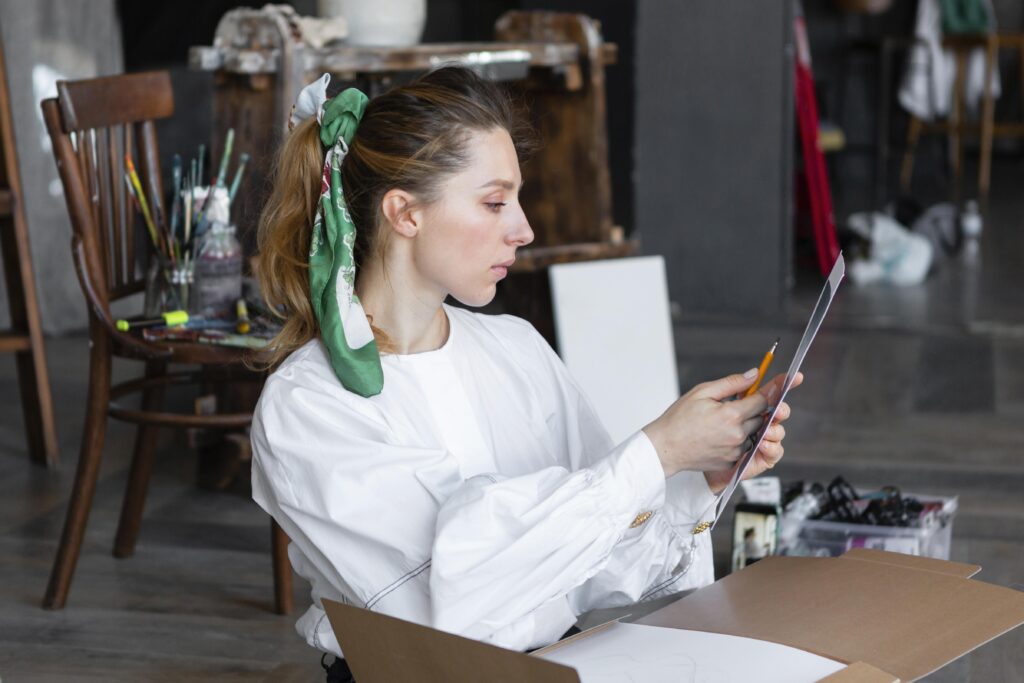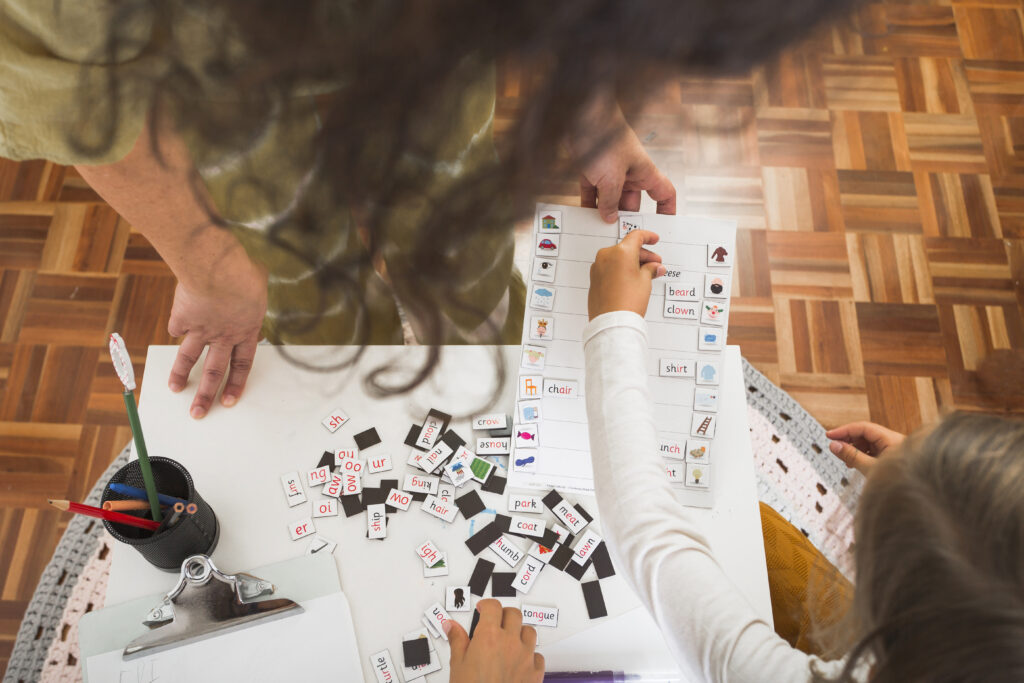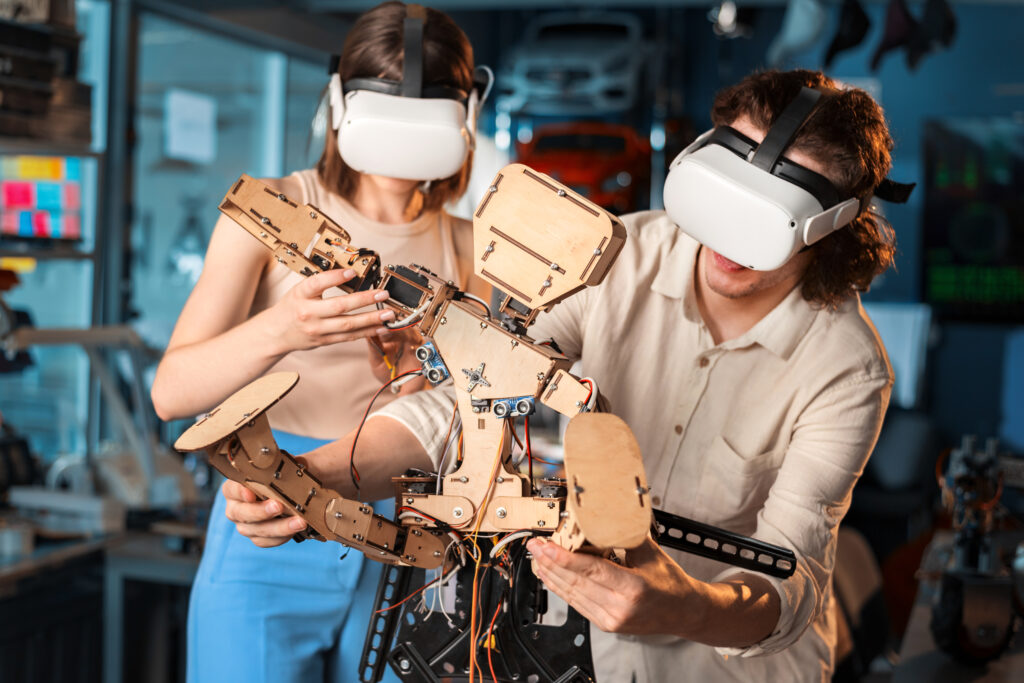Co-Creating Art: 12 Machine Intelligence Tips
As the boundaries between human creativity and artificial intelligence become increasingly blurred, artists are presented with unprecedented opportunities to explore the confluence of these realms. 12 Tips for Co-Creating Art With Machine Intelligence is an essential guide for those seeking to navigate this novel terrain. We meticulously dissect the nuances of forming a symbiotic relationship with AI within this discourse. We offer pragmatic approaches to crafting prompts that yield the most compelling artistic results and discuss the intricate balance between providing direction and allowing for autonomous AI creativity.
The guide is not merely a set of instructions but a portal to a new epoch of artistic collaboration where the fusion of human intuition and machine learning algorithms can lead to uncharted aesthetic territories. As we venture further into the discussion, it becomes evident that these tips are not just recommendations but critical considerations that could define the future of art itself.
Key Takeaways
- Understand the functionalities and limitations of AI collaborators to employ their strengths while being aware of their limitations strategically.
- Clearly define artistic objectives, aesthetic preferences, and thematic parameters to establish a robust framework for the AI’s generative process.
- Communicate artistic objectives precisely, including details like the color palette and emotional tone, while introducing inspirations from art history or contemporary works.
- Regularly assess and refine project goals throughout the collaboration, considering the audience and intended impact of the art.
Understand Your AI Partner

To effectively co-create art with an AI, one must thoroughly analyze and comprehend their artificial intelligence collaborator’s specific functionalities and creative boundaries. In AI art tools, the creative process is significantly influenced by the underlying algorithms and data sets that power these tools.
Artists seeking to harness the potential of machine intelligence must become adept at discerning the preferences and capabilities inherent within their AI partner. This entails thoroughly examining the AI’s performance across various artistic tasks and understanding its procedural generation methods.
Crafting effective prompts and inputs is a nuanced skill that directly impacts the quality of the artistic output. Artists must develop a keen sense of the types of prompts that elicit the most compelling and relevant responses from the AI. Furthermore, recognizing the strengths of AI allows artists to strategically employ its capabilities, while an awareness of its limitations can prevent missteps in the creative journey.
By integrating an analytical and technical approach, artists must also remain vigilant about their collaborative endeavors‘ ethical and creative implications. Responsible art-making with AI necessitates a balance between innovation and considering intellectual property rights, originality, and the authenticity of the co-created works.
Define Artistic Objectives

Transitioning from understanding the capabilities of your AI collaborator, the next critical step involves crystallizing the artistic objectives for the joint endeavor.
It is imperative to delineate the creative vision, articulate precise project goals, and explicate aesthetic preferences. This provides a robust framework that directs the AI’s generative process.
This structured approach ensures the resulting artwork aligns with the predetermined thematic and stylistic parameters. It fosters a synergistic creation that embodies the intended artistic narrative.
Identify Creative Vision
Establishing a clear and detailed creative vision is essential for guiding AI toward producing art that meets your defined artistic objectives. When co-creating art with machine intelligence, consider the following:
- Artistic Objectives: Be precise about your goals; determine the subject, style, and message you wish to convey.
- Communication of Details: Specify elements like color palette, texture, and emotional tone to narrow the AI’s generative path.
- Artistic References: Introduce inspirations from art history or contemporary works to give the AI contextual boundaries.
- Open-Ended Prompts: Craft your instructions for AI’s interpretative freedom, fostering innovation within the co-creation process.
This analytical approach ensures that the co-creation of art with AI is a structured yet flexible endeavor, effectively blending human creative vision with computational creativity.
Set Project Goals
Setting clear project goals is fundamental in ensuring the AI’s creative output aligns with the predefined artistic objectives, thus necessitating precise communication of the desired mood, style, and thematic elements. Establishing specific parameters and constraints is crucial for guiding the AI in the co-creation process with artificial intelligence. This includes defining the color palette, visual elements, and artistic references that will shape the final artwork. Furthermore, considering the audience and the intended impact of the art is essential for tailoring the project goals. As the collaboration evolves, it is vital to regularly assess and refine these goals to ensure they continue to meet the artistic objectives.
| Goal Aspect | Description | Importance for AI Guidance |
|---|---|---|
| Mood | Define the emotional tone (e.g., serene, chaotic) | Directs emotional resonance |
| Style | Specify visual style (e.g., abstract, realistic) | Shapes aesthetic execution |
| Thematic Elements | Communicate the subject matter and motifs | Influences content creation |
| Constraints | Set parameters (e.g., color palette, visual references) | Ensures adherence to vision |
Clarify Aesthetic Preferences
Defining artistic objectives requires meticulously articulating aesthetic preferences, ensuring that the AI’s generated art faithfully represents the envisioned style, themes, and emotional undertones.
When co-creating with machine intelligence, such as Midjourney, for generative art, it is pivotal to:
- Communicate Desired Styles: Be explicit about artistic styles that appeal to you, from abstract to realism or a fusion of genres.
- Specify Themes and Emotions: Articulate the thematic narratives and emotional impacts you aim to evoke through your art.
- Detail Visual Elements: To guide the generative process, offer granular details about color schemes, compositions, and specific imagery.
- Iterative Refinement: Continuously engage with Midjourney, tweaking inputs and assessing outputs to hone in on your aesthetic preferences and artistic objectives.
Start With Simple Prompts

Initiating the art creation process with clear and straightforward prompts is critical in establishing a foundational direction for the collaborative piece. By carefully defining the vision, artists can utilize specific keywords that encapsulate the desired thematic elements and stylistic nuances.
This approach facilitates the refinement of prompt precision, ensuring the AI can interpret and execute the artistic intent more accurately.
Define Your Vision
To crystallize your artistic aspirations, initiate the process with straightforward prompts that encapsulate your envisioned artwork’s desired subject, style, and emotional resonance.
In your creative processes, it is essential to define your vision with precision, and this can be achieved through a structured approach:
- Subject Specificity: Clearly describe your work’s central theme or focus, ensuring the AI understands the core concept.
- Stylistic Details: Provide fine-grained directions about lines, forms, and stylistic influences, referencing known art pieces or movements.
- Mood Conveyance: Articulate the emotional tone and atmosphere, using descriptive language that paints a mental picture.
- Balance and Flexibility: Strike a thoughtful equilibrium between detailed instructions and open-ended suggestions, allowing AI to infuse its unique creative flair.
Experiment With Keywords
Having established a clear vision for the artwork, engaging with the art generation process is beneficial by experimenting with simple keyword prompts to gauge their influence on the final piece.
Machine learning algorithms, such as those used in Disco Diffusion, parse these prompts to generate visual content.
Starting with elemental prompts like sunset or joy can reveal how the AI interprets abstract or emotional concepts.
Introducing basic descriptives—’blue ocean’ and ‘vibrant cityscape’—enables scrutiny of the AI’s capacity to render straightforward imagery.
Incorporating art movement keywords—’impressionism,’ ‘surrealism’—tests the system’s ability to adapt historical styles into its creations.
Mood-based prompts like ‘peaceful’ or ‘energetic’ further allow artists to understand how machine intelligence translates emotive language into corresponding visual expressions, refining the co-creative process.
Refine Prompt Precision
Embarking on the journey of precision in art creation, one should commence with straightforward prompts that encapsulate the piece’s desired subject, style, and emotional tone. To refine prompt precision effectively for the AI model, consider the following:
- Subject Specificity: Start with a clear and concise subject description to guide the initial output of the AI.
- Style and Mood: Insert parameters that describe the intended artistic style and emotional mood for more accurate results.
- Open-Ended Creativity: Employ open-ended phrasing to balance directive precision with creative latitude for the AI model.
- Iterative Refinement: Continuously tweak and adjust the prompts based on the AI’s output, enhancing the co-creative process and fine-tuning the art piece’s alignment with the vision.
Embrace Experimentation

Embracing experimentation is pivotal in the co-creative process with Midjourney, as it allows artists to explore the influence of diverse prompts and variables on the generated artwork. A technical approach involves methodically altering input variables to determine their impact on the creative outputs. Artists should not shy away from pushing the boundaries of conventional prompts, as creative AI systems like Midjourney thrive on varied and innovative inputs.
The table below showcases a structured experiment framework with creative AI:
| Variable Type | Experimentation Strategy | Expected Outcome |
|---|---|---|
| Art Style | Blend multiple styles in a single prompt | Generation of hybrid artworks with unique aesthetics |
| Subject Matter | Combine unrelated subjects | Creation of novel and unexpected visual narratives |
| Mood | Vary mood descriptors in prompts | Artwork reflecting a wide spectrum of emotions |
Balance Control and Serendipity

In co-creating art with AI, striking an optimal balance between control and uncertainty is essential for fostering precision and creative breakthroughs. The interplay of human creativity with machine intelligence requires a nuanced approach, where the artist must navigate the spectrum between meticulous direction and embracing the unforeseen.
To achieve this delicate equilibrium, consider the following strategies:
- Experiment with Prompt Specificity: Adjust the level of detail in your prompts to modulate the influence of human creativity and the AI’s generative capabilities. This fine-tuning can lead to a productive tension between intention and innovation.
- Allow for Unpredictability: Cultivate an openness to serendipitous outcomes by constructing prompts that invite the AI to introduce an element of surprise, which can result in unanticipated and groundbreaking artistic expressions.
- Provide Direction with Flexibility: Aim for a balance where your prompts are clear yet not overly prescriptive, permitting the AI to contribute its interpretative nuances that can enhance the artwork’s originality and depth.
- Embrace Controlled Chaos: Strive for a synergy that harmonizes detailed guidance with the potential for spontaneous artistic discoveries, fostering an environment where structured creativity can flourish alongside serendipitous creation.
Refine Through Iteration
The refinement of co-created art through iterative adjustments to prompts enables a more precise and tailored artistic output. This process involves systematically modifying the prompts’ variables, parameters, and styles to gauge the artificial intelligence’s (AI) responses. As one attempts to create something unique and of high quality, it is essential to engage in trial and error; this allows the artist to refine and enhance the AI-generated art gradually across multiple iterations.
By continuously fine-tuning the prompts based on initial results, creators can steer the AI towards a more defined artistic vision. This requires an analytical mindset; each iteration must be assessed in detail to identify which adjustments yield improvements in the artwork’s quality and distinctiveness. Over time, this meticulous refinement process helps to unlock the AI’s full artistic potential, enabling creators to explore an extensive range of creative possibilities.
Iteratively refining prompts is a critical component of the co-creative journey with machine intelligence. This disciplined process reveals the nuances and complexities of the AI’s capabilities, and the collaborative artwork reaches its optimal form.
Learn From Each Output
As creative practitioners engage with machine intelligence, extracting lessons from each artistic iteration becomes imperative, utilizing the output as a foundation for refining subsequent prompts and enhancing the co-creation process. Learning from each output when creating art with AI systems involves a methodical examination of the generated art results to understand better and control the creative partnership.
- Prompt Analysis: Scrutinize how different prompts affect the AI’s output, noting the nuances in language that yield varied artistic expressions.
- Pattern Recognition: Identify consistent trends in the AI responses to refine the prompting strategy and predict future outputs more accurately.
- Process Understanding: By observing the variations in art outputs, gain insights into the AI’s interpretative algorithms and its processing of creative instructions.
- Iterative Refinement: Use the knowledge gained from each output to incrementally adjust prompts, aiming for a more precise articulation of the desired artistic vision.
This iterative loop fosters a symbiotic relationship between the artist and the AI system, where each output informs the next, progressively honing the quality of the co-created art. Through this analytical and detailed approach, practitioners can enhance their mastery of the AI-assisted creation, leading to more sophisticated and intentional artwork.
Incorporate Mixed Media
Incorporating mixed media into co-created art necessitates carefully analyzing how AI-generated components can complement and enhance traditional art forms. This integration often requires mastering diverse media techniques, ensuring that the digital and physical elements merge seamlessly to produce a cohesive artistic narrative.
The strategic blend of human innovation and machine-generated elements serves as a methodological exploration and a commentary on the evolving definitions of authorship and the creative process in the digital age.
Blending Human-Machine Creativity
Experimentation with various prompts and artistic variables is a fundamental approach to forging unique art pieces that combine human and machine creativity. When co-creating art with machine intelligence, it is crucial to blend human-machine creativity in a manner that leverages the strengths of both entities. Here are specific strategies to enhance this collaboration:
- Generate diversity by experimenting with prompts and variables pushing traditional art forms’ boundaries.
- Guide AI with references to other artists or styles, shaping the aesthetic or mood of the piece.
- Employ open-ended phrasing to allow AI space for improvisation, avoiding overly restrictive constraints.
- Offer detailed, specific input regarding subject matter, color palettes, textures, and styles to anchor the AI’s creative process.
Diverse Media Integration Techniques
Building on the foundation of blending human-machine creativity, incorporating diverse media integration techniques offers a pathway to further enrich the co-creation process by fusing traditional and digital art forms. By combining the tactile qualities of brushes or pencils with digital manipulation, artists can explore new dimensions of expression. Integrating physical elements with digital artistry enables a multilayered approach, where each medium contributes its unique texture and form.
| Traditional Mediums | Digital Enhancements |
|---|---|
| Brushes or pencils | Digital filters |
| Found objects | Augmented reality |
| Fabric and textured materials | Projection mapping |
| Collage and assemblage | Interactive elements |
This table represents a synthesis of tools and techniques that, when applied, can stimulate a profound emotional response, reflecting the intricate dance between analog and digital realms.
Establish a Feedback Loop
Creating a dynamic feedback loop is essential for informing the AI about which aspects of its generated art align with your aesthetic preferences. By consistently and precisely communicating what works and what doesn’t, you ensure that the machine learning algorithms adapt to your creative vision, allowing you to remain an artist at the core of the co-creation process.
Consider these steps to establish an effective feedback loop:
- Direct Feedback: Clearly articulate your likes and dislikes regarding the AI-generated art. Be specific about texture, form, and thematic content, ensuring the AI can accurately parse and utilize the feedback.
- Constructive Criticism: Balance your feedback with positive reinforcement for successful outcomes and constructive criticism for areas of improvement. This nuanced communication helps the AI to calibrate its generative processes more effectively.
- Iterative Process: Engage continuously with the AI, providing feedback at various stages of art creation. Observe how the AI iterates on your input and refines its output accordingly.
- Detail-Oriented Interaction: Maintain a high level of detail in your feedback to guide the AI’s learning precisely. General comments are less effective than specific, actionable feedback.
Through this analytical and detailed approach, the feedback loop becomes a powerful tool for steering the AI’s artistic development in alignment with your creative goals.
Explore Diverse Styles
While establishing a feedback loop fine-tunes the AI’s output to align with your preferences, exploring diverse styles through the Me journey amplifies the potential for innovative and eclectic artistic creations. Using Midjourney’s extensive palette of art styles, artists can transcend traditional boundaries, merging classical techniques with avant-garde aesthetics. The platform’s ability to interpret and render artistic prompts enables users to navigate a continuum of art history and culture, simulating the brushstrokes of van Gogh or the intricate patterns of ancient civilizations.
The technical architecture behind Me journey facilitates an analytical exploration of visual forms, allowing for the deconstruction and reassembly of artistic components in novel configurations. Users can prompt the AI to juxtapose disparate elements, fostering an environment where the unexpected can flourish. This breadth of creative diversity is not just a replication of existing genres; it is an ever-expanding library of visual language, offering a diversity of narratives and textures.
Artists, once we grow accustomed to a specific style, the Me journey encourages a paradigm shift, challenging creators to think beyond their comfort zones. Engaging with a vast spectrum of styles, artists co-create with machine intelligence to push the envelope of creative expression, ensuring that each journey through art is as unique and boundless as the next.
Protect Your Digital Ethics
In the digital realm of co-created art, vigilance is paramount in safeguarding ethical practices, particularly when integrating personal data and artistic content with AI tools. As we harness the potential of AI in the creative process, it becomes essential to maintain a framework for digital ethics to ensure that our technological advancements do not compromise our moral standards.
Here are four critical guidelines to consider:
- Data Sensitivity: Scrutinize the nature of data fed into AI systems, safeguarding against the exposure of private information and mitigating the risk of misuse.
- Intellectual Property: Uphold the integrity of copyright laws and intellectual property rights, ensuring AI-generated art does not infringe upon the original creator’s work.
- Algorithmic Bias: Analyze and address inherent biases within AI algorithms to prevent the perpetuation of stereotypes and encourage the creation of diverse and culturally respectful art.
- Consent and Privacy: Secure explicit consent from individuals whose likeness or work may be featured in AI-generated art, respecting their privacy and agency.
Adhering to these principles is crucial in preserving art’s integrity in the machine intelligence age. It fosters a culture of responsibility and respect, a testament to the conscientious use of powerful AI tools.
Showcase and Share Insights
Utilizing Midjourney as a platform, artists can effectively showcase their AI-generated art, offering audiences a transparent view of the intricacies of the creative process. The Midjourney interface enables artists to document each stage of co-creating art with machine intelligence, from formulating initial prompts to refining and realizing the final artwork. This transparency not only demystifies the role of machine intelligence in creative production but also invites a more profound appreciation for the artist’s vision and the technology’s capabilities.
Artists can dissect the methodologies employed in integrating machine intelligence into their workflow by highlighting the process. Insights into decision-making, aesthetic choices, and technical adjustments become educational content for an audience increasingly interested in the fusion of creativity and technology. Discussing the inspiration behind the AI-generated pieces further enriches the narrative, positioning Midjourney as a catalyst for innovative expression.
Moreover, audience engagement is amplified when viewers are encouraged to interpret and react to the co-created art. This interaction often yields diverse perspectives, enriching the discourse surrounding AI’s evolving role in art. Collaborative projects showcased on Midjourney serve as a testament to the synergistic potential of human and machine intelligence, providing tangible insights into the dynamics of artistic partnership in the digital age.
FAQs
What does co-creating art with machine intelligence mean?
Co-creating art with machine intelligence involves collaboration between human artists and artificial intelligence algorithms or models. It’s a process where both the human and the AI contribute to the creative outcome.
Why would artists choose to co-create art with machine intelligence?
Artists may co-create with machine intelligence for various reasons, including exploring new creative possibilities, leveraging AI as a tool for inspiration, and experimenting with the fusion of human creativity and computational algorithms.
How can artists get started with co-creating art with machine intelligence?
Artists can start by familiarizing themselves with AI tools and platforms for artistic collaboration. Learning the basics of machine learning and understanding the capabilities of AI models can also be beneficial.
What types of machine intelligence can be used for co-creating art?
Various types of machine intelligence can be used, including generative models like GANs (Generative Adversarial Networks), style transfer algorithms, and other AI models designed for creative tasks.
Do artists need programming skills to co-create art with machine intelligence?
While programming skills can be advantageous, some user-friendly tools and platforms allow artists to co-create without extensive programming knowledge. Many AI art tools provide intuitive interfaces for creative exploration.
